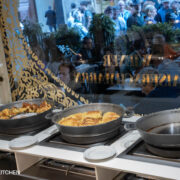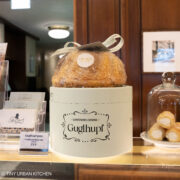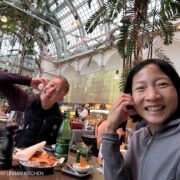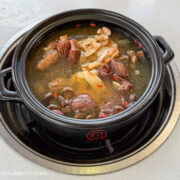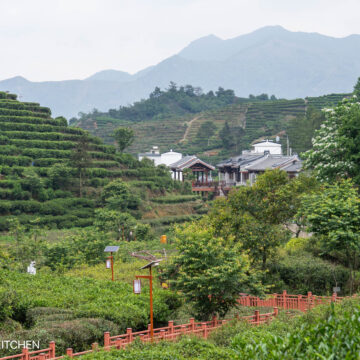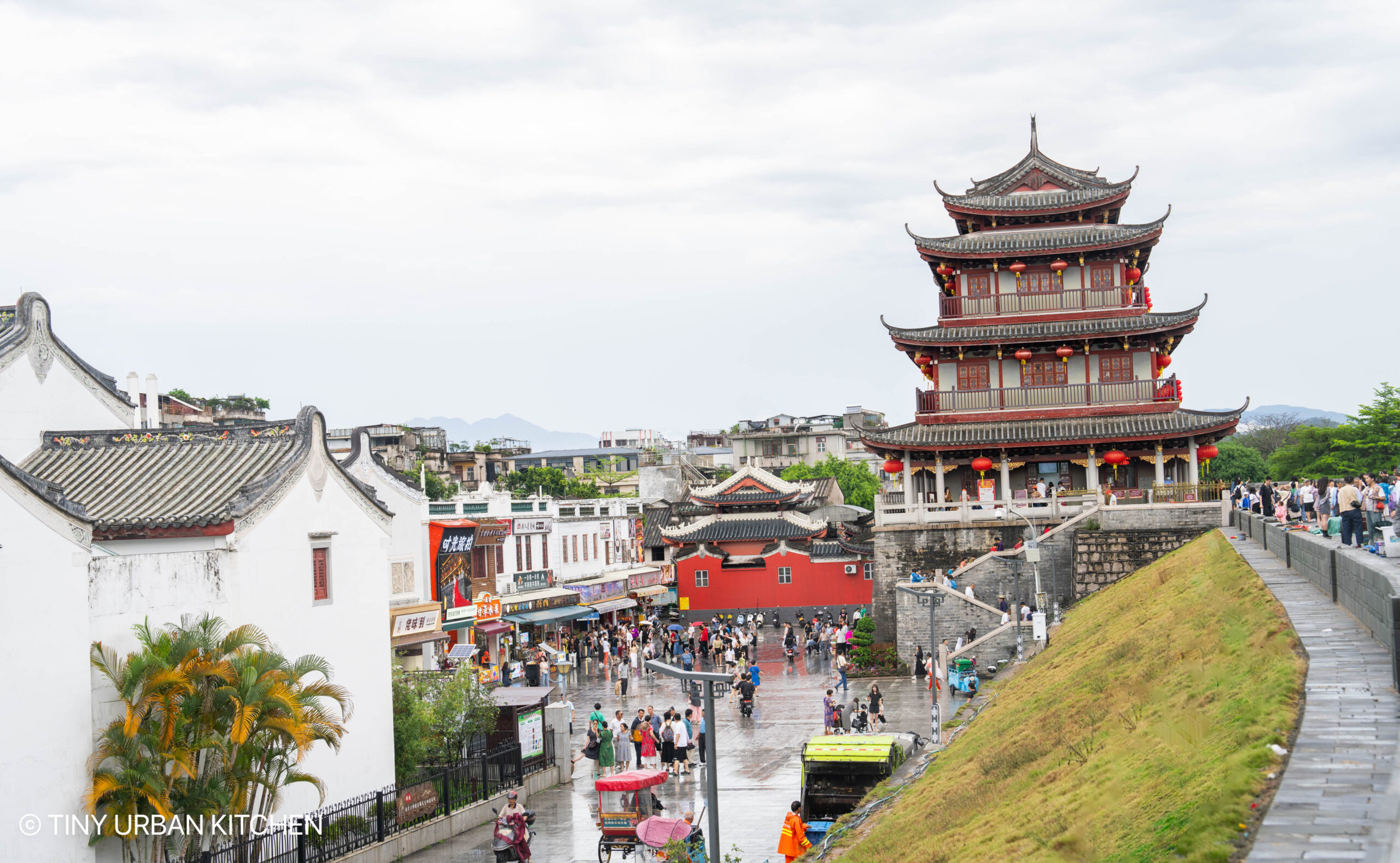
It amazes me that I had never heard of “Chiu Chow” Chaozhou 潮州 food before moving to Hong Kong. The cuisine is super popular in Hong Kong (including several in the Michelin Guide), and most people recognize it as a “foodie” cuisine. When I told friends I went to Chiu Chow over the weekend, the first response I’d get would be “oh, the food’s really good there.”
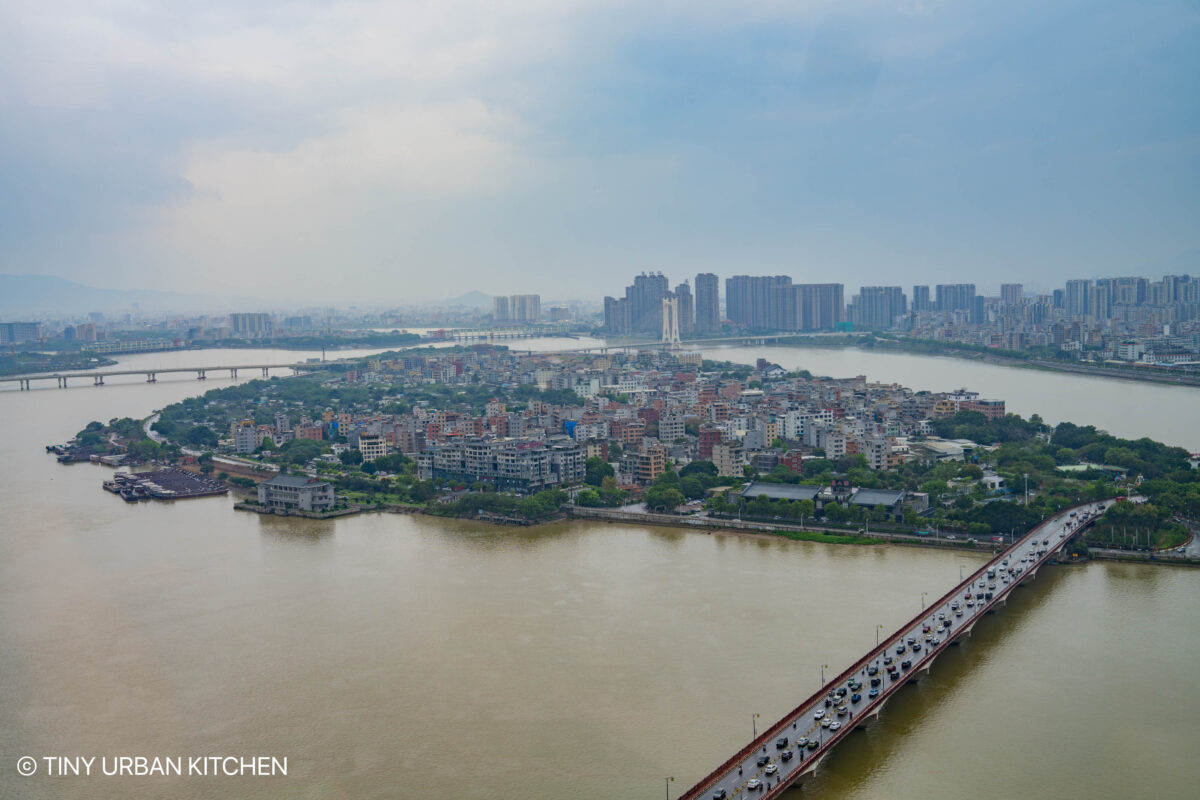
In Hong Kong, certain “classic” Chiu Chow dishes frequently appear on restaurant menus, such as braised goose 卤水鹅 and oyster pancake 蛤仔煎. In some ways I thought I was pretty familiar with the cuisine. However, this trip opened my eyes up to another side of Chiu Chow cuisine. How? Local friends who grew up in the city (and whose families still live there!) took us on a unique and very personalized tour of the city.
Here’s a recap of what we did during our two days in Chaozhou!
DAY 1
Jieyang Handmade Dry Noodles 揭阳手工擀面
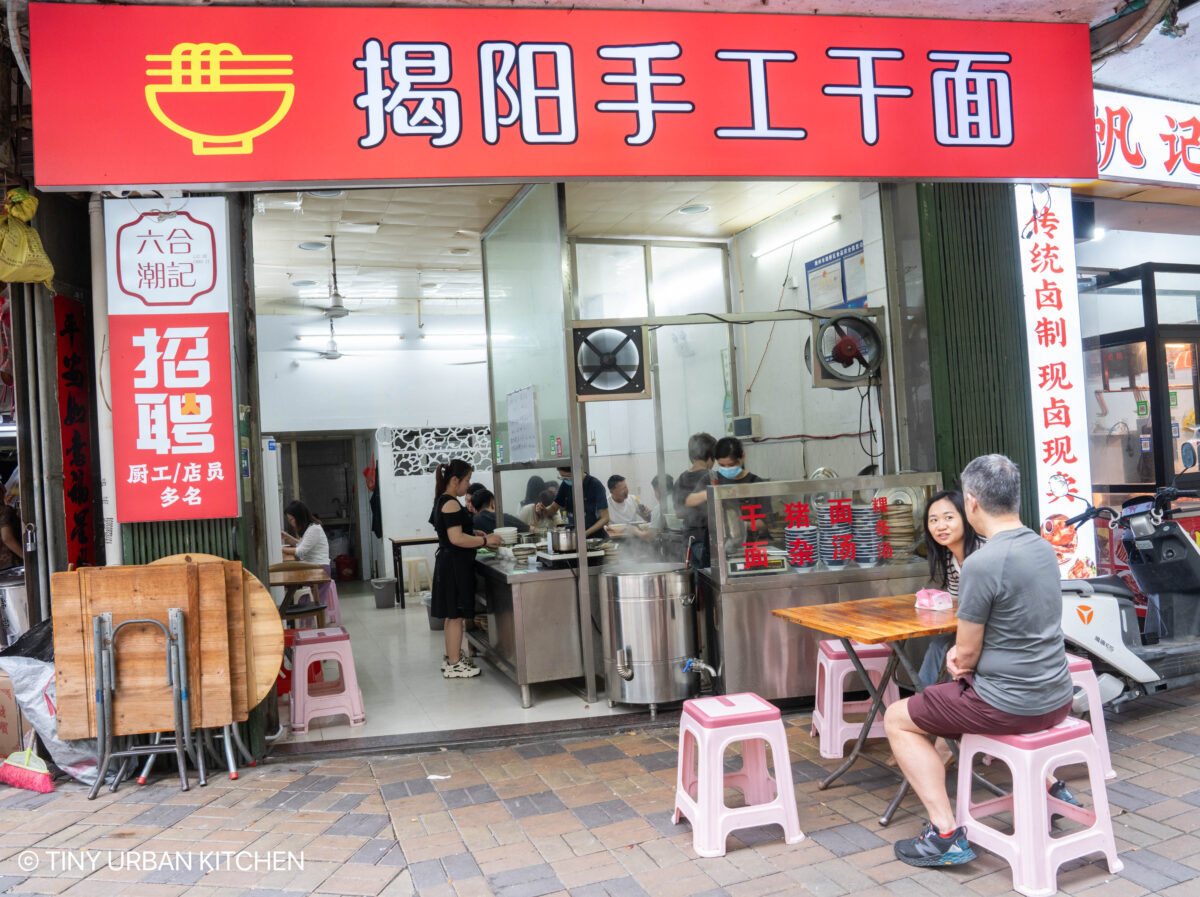
揭阳 Jieyang is a neighboring city that is known for its own special type of handmade noodle. Our friend’s cousin married a man from this neighboring town, and the couple opened up a popular noodle shop specializing in Jieyang style noodles. They “import” (it’s a 30 minute drive) the fresh noodles from Jieyang every morning and prepare everything else themselves.
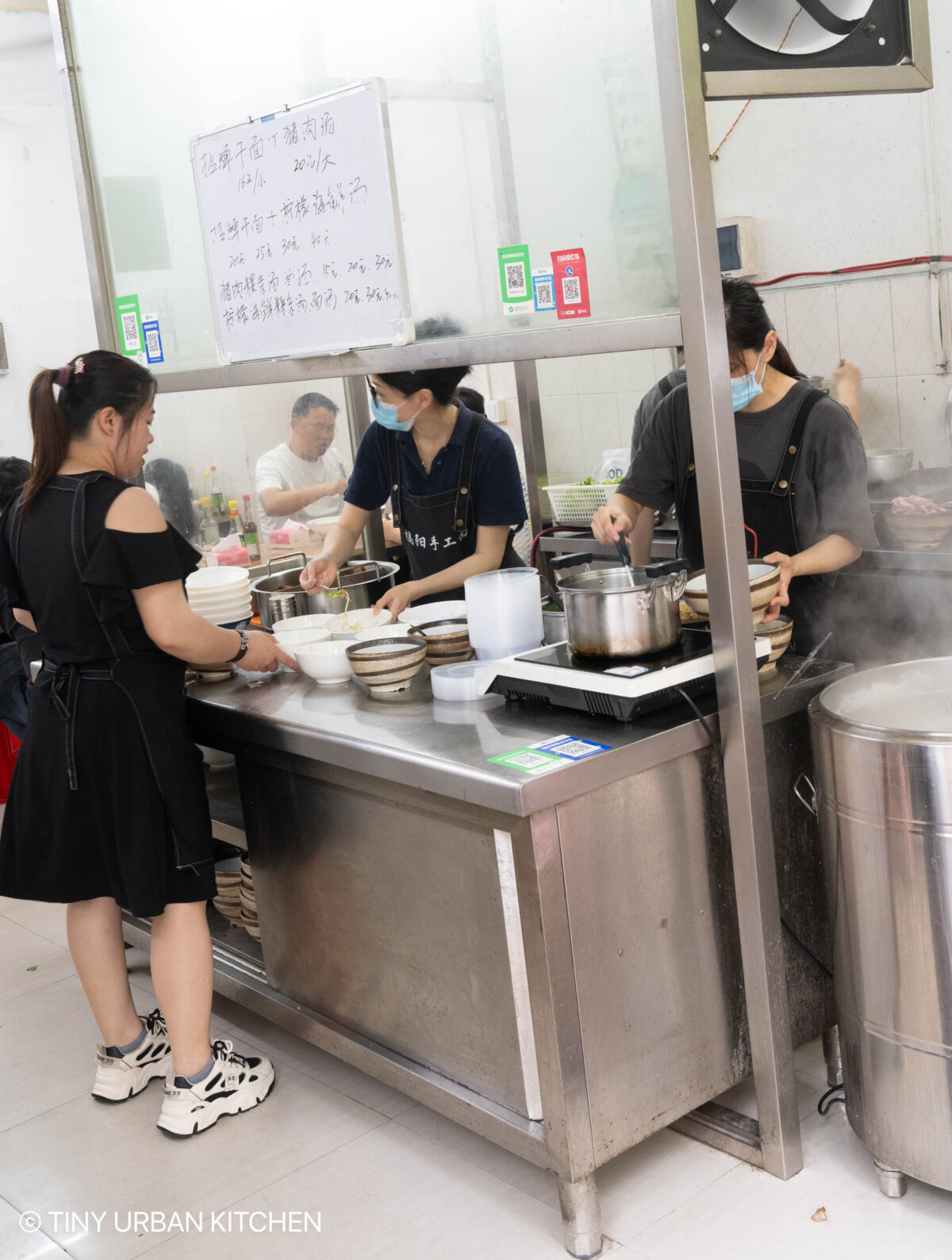
Chaozhou people always eat dry sauce noodles “paired” with a bowl of clear soup. They find that the soup provides balance, a light, “cleansing” counterpoint to the saucy noodles. This was fantastic, and at US$3 a bowl, truly a steal.
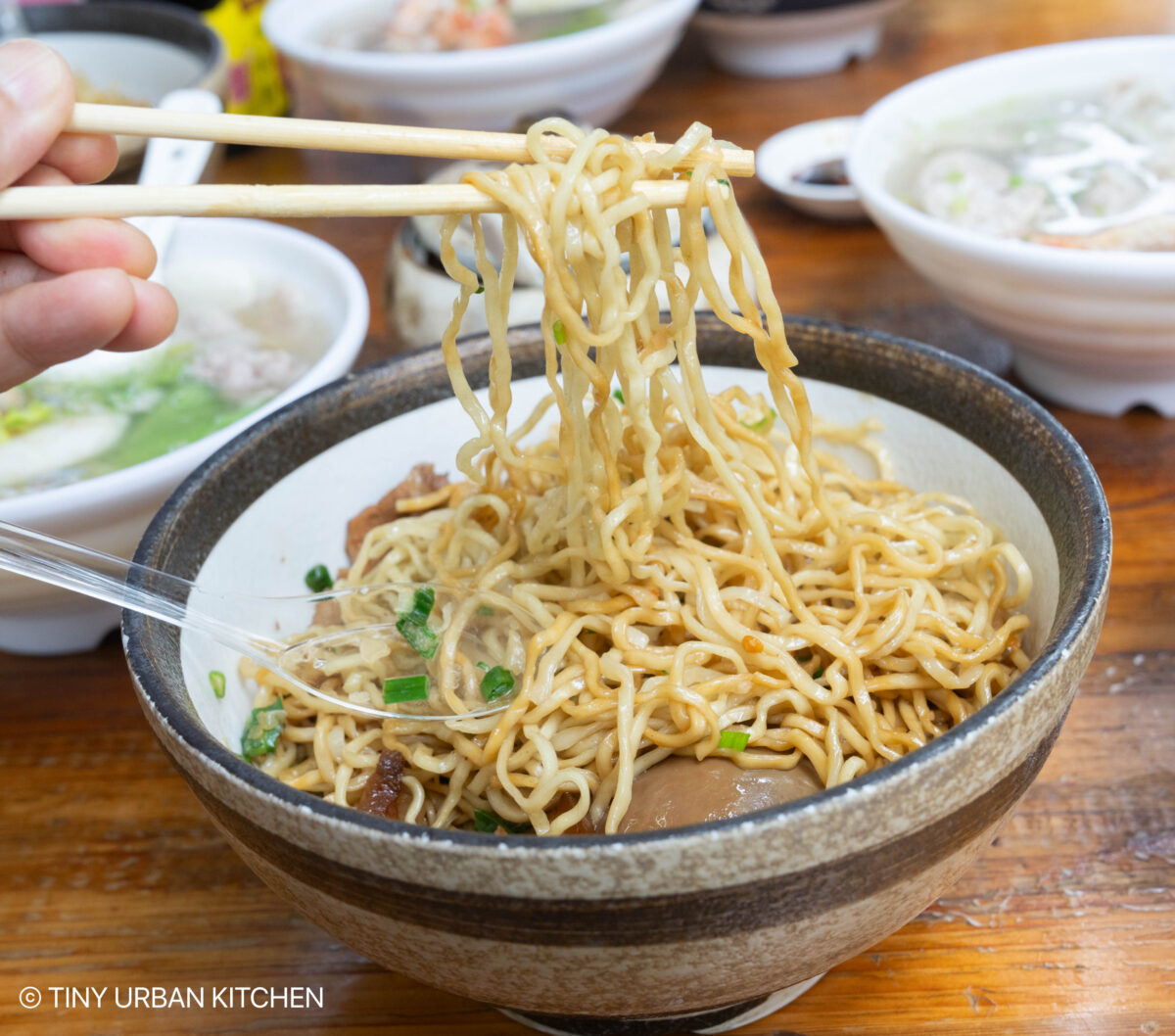
All the ingredients are made from scratch. Pork fat is the secret ingredient in the sauce for the noodles, giving the noodles a wonderfully fragrant and rich flavor profile.
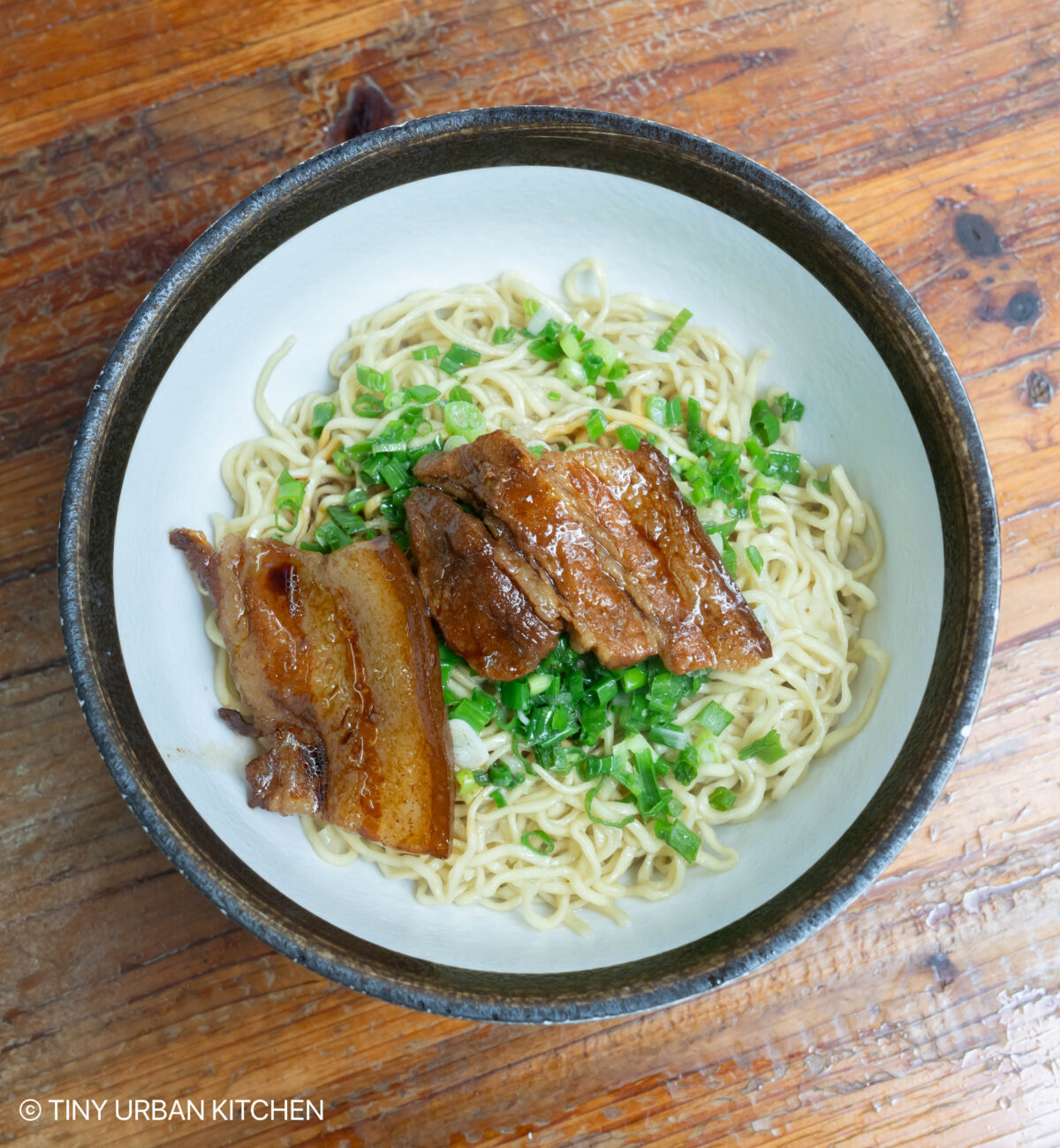
The handmade noodles are perfectly “Q” (al dente), and the seafood soup is refreshing and a much needed balance to the heavier, rich noodles.
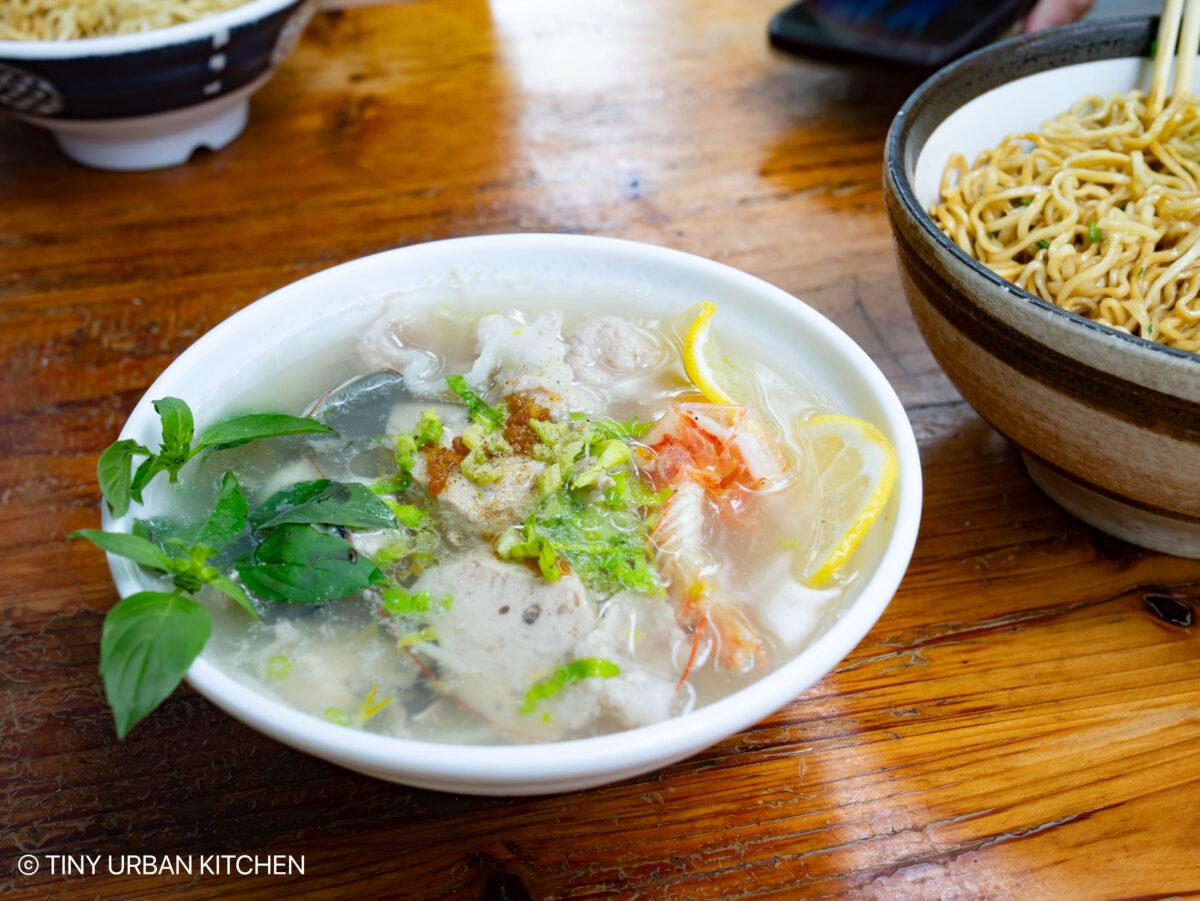
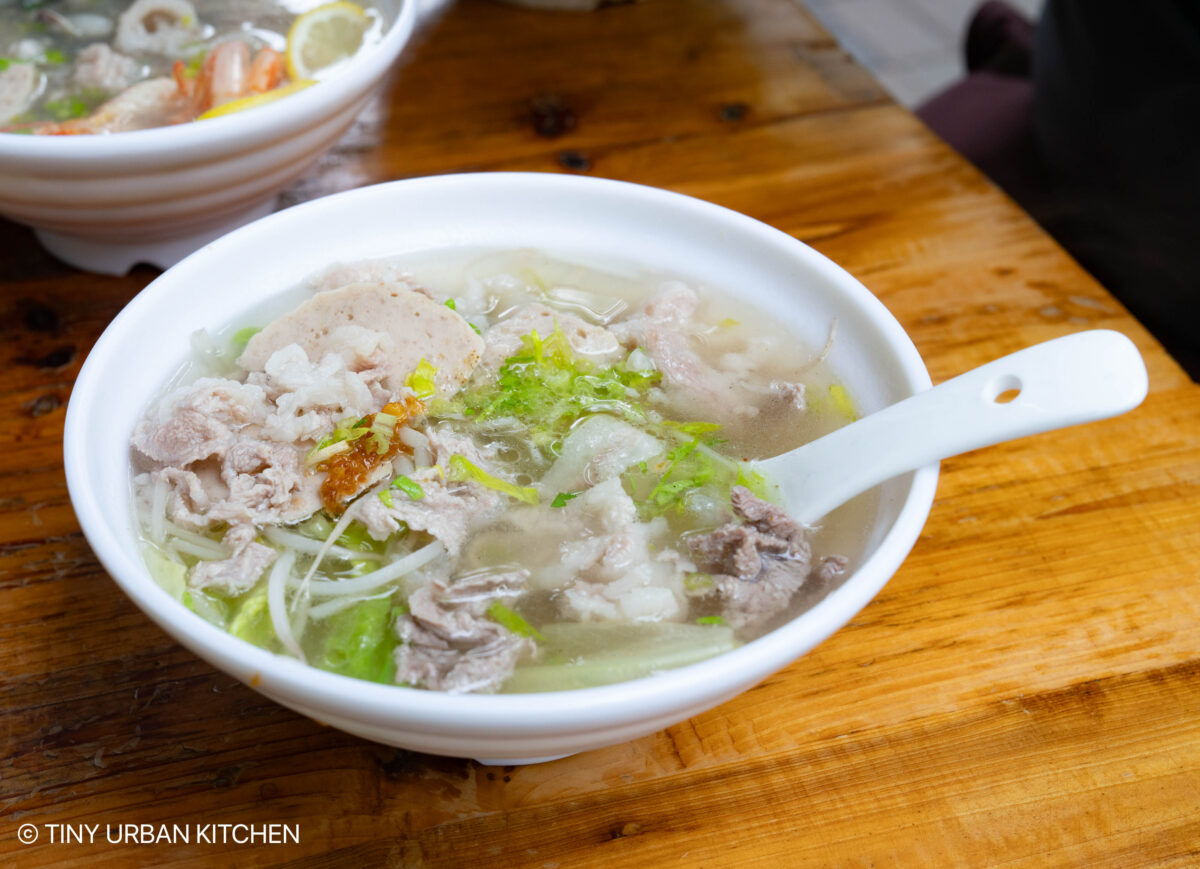
Guangji Bridge + the Old City
Traveling in the spring has its risks. After our lovely (outdoor!) lunch, the weather took a rapid turn for the worse and we found ourselves stuck on Chaozhou’s most famous bridge in the midst of a torrential rain storm.
Yes, we were soaked. Yes, the bridge was jam packed with unprepared tourists on one of China’s biggest holidays.
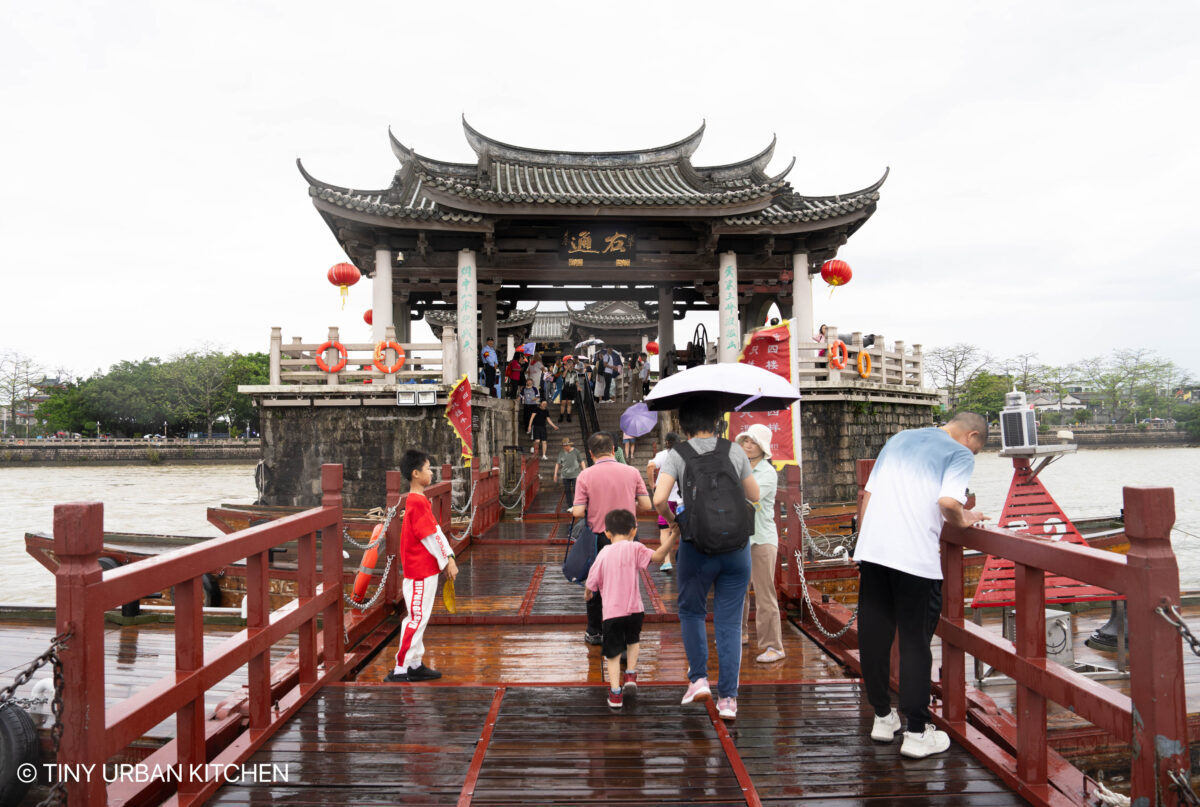
But we had a good laugh and still enjoyed ourselves. We certainly have unique photos and videos from the freak storm.
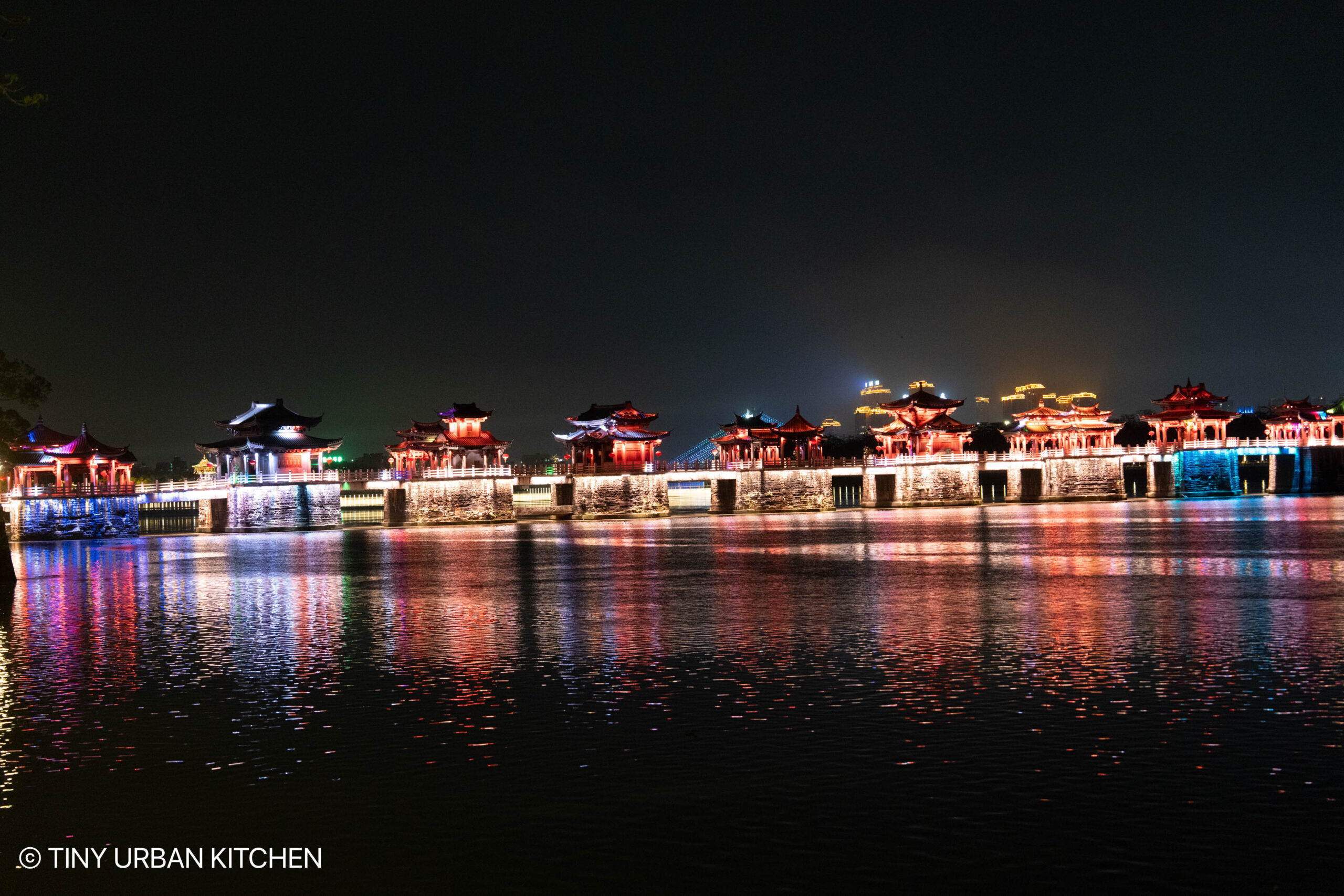
This bridge has very beautiful architecture and a deep history dating back to the Song Dynasty (1170 A.D.). Its most interesting feature is how it doesn’t go all the way across. A portion is left open to allow large boats to cross at night. During the day, a series of canoes are laid out as a temporary bridge. It’s a fun (touristy) act to walk across the bridge.
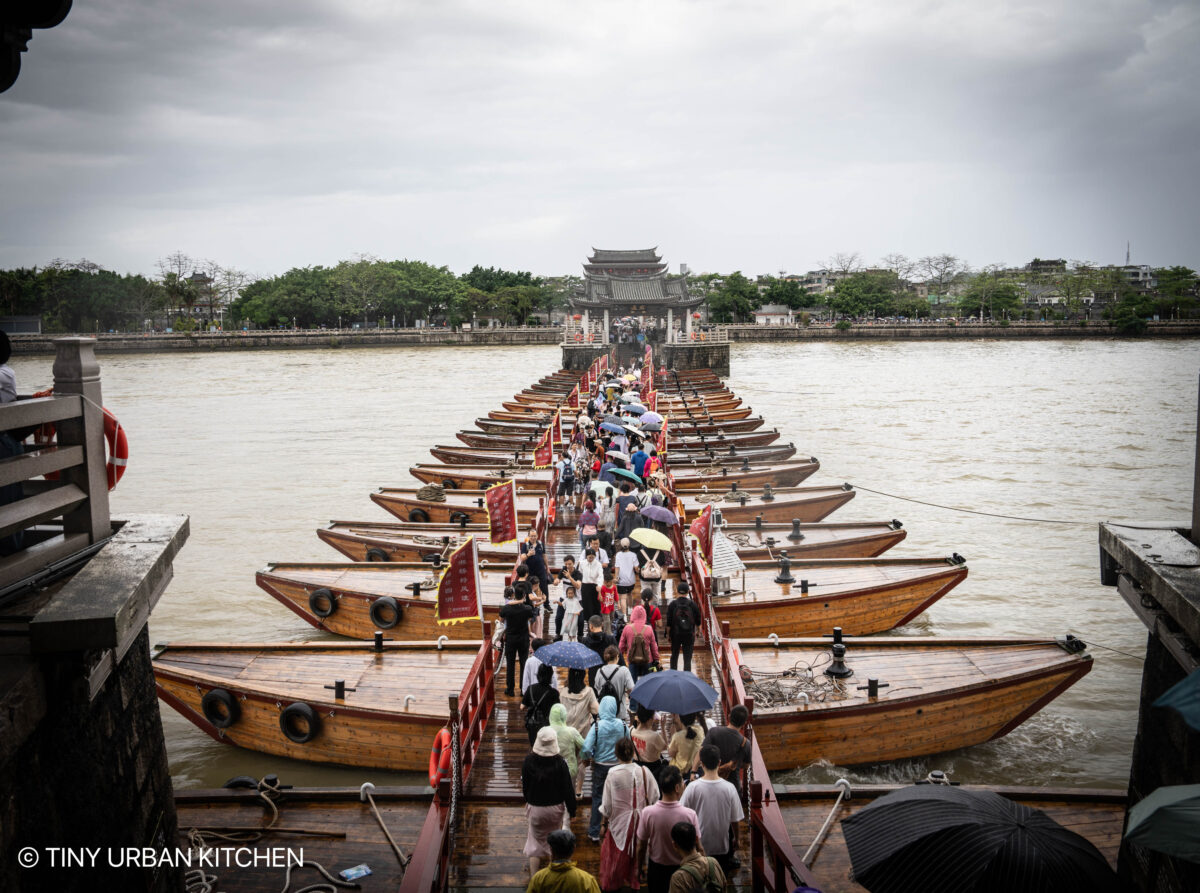
Once you cross the bridge, you come upon the Ancient City Wall and the Old City.
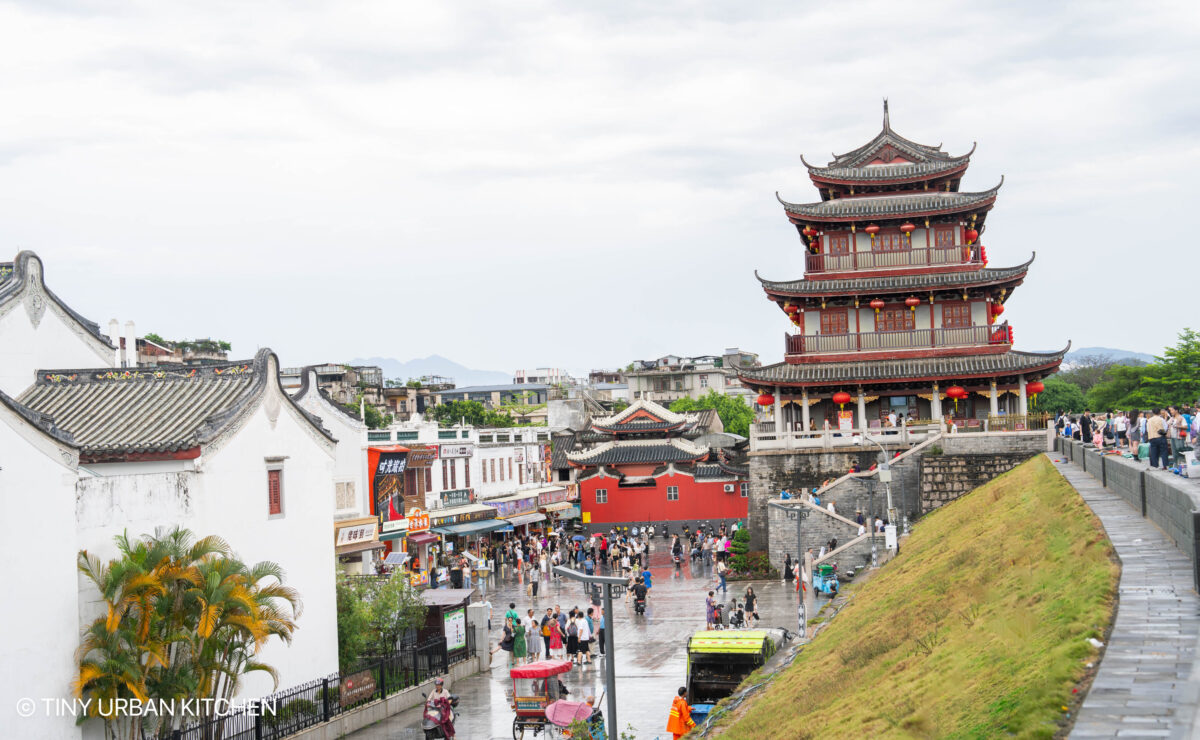
Take a walk down Chaozhou Arch Street, where different arches honor different civil servants who got high scores on their exams.
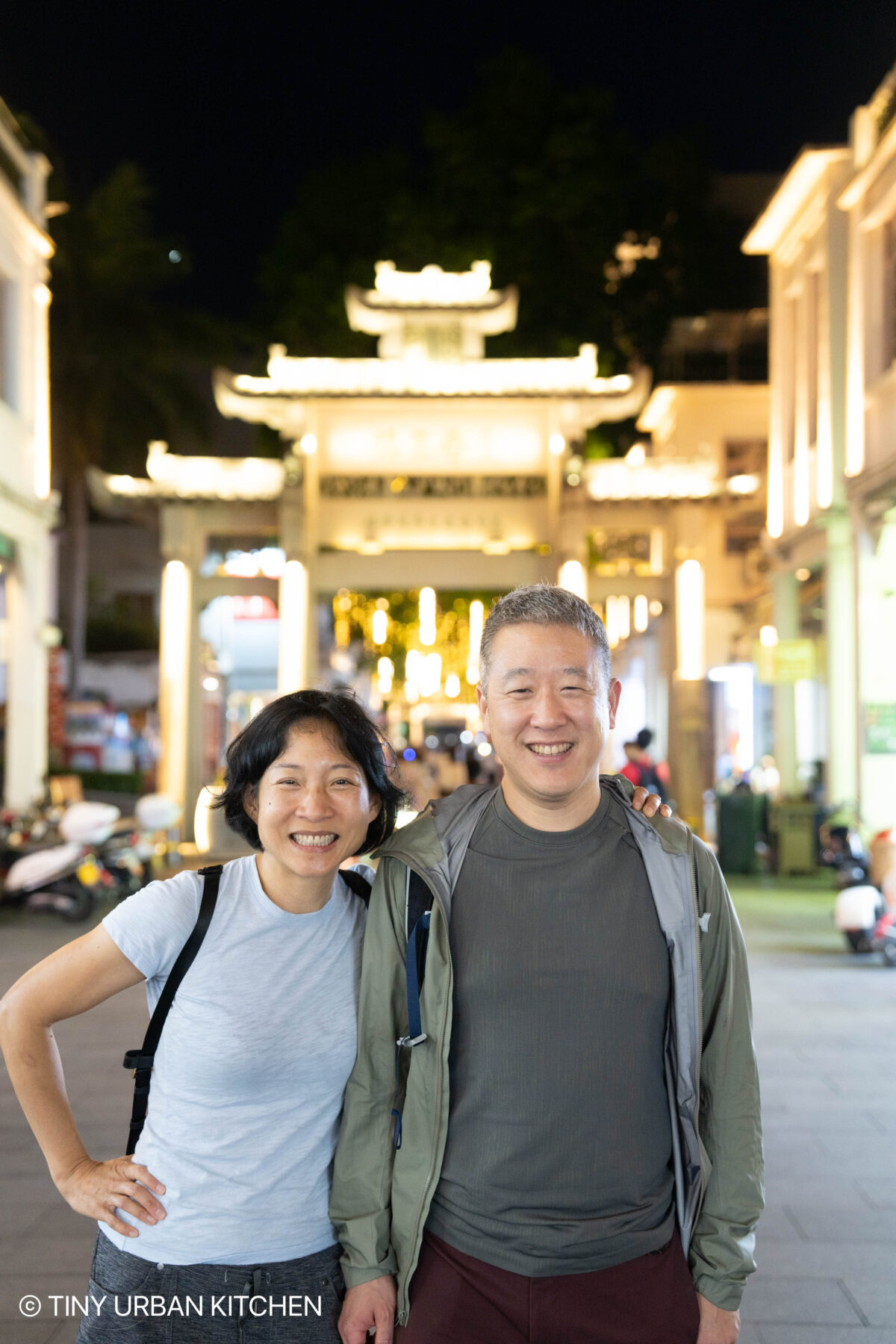
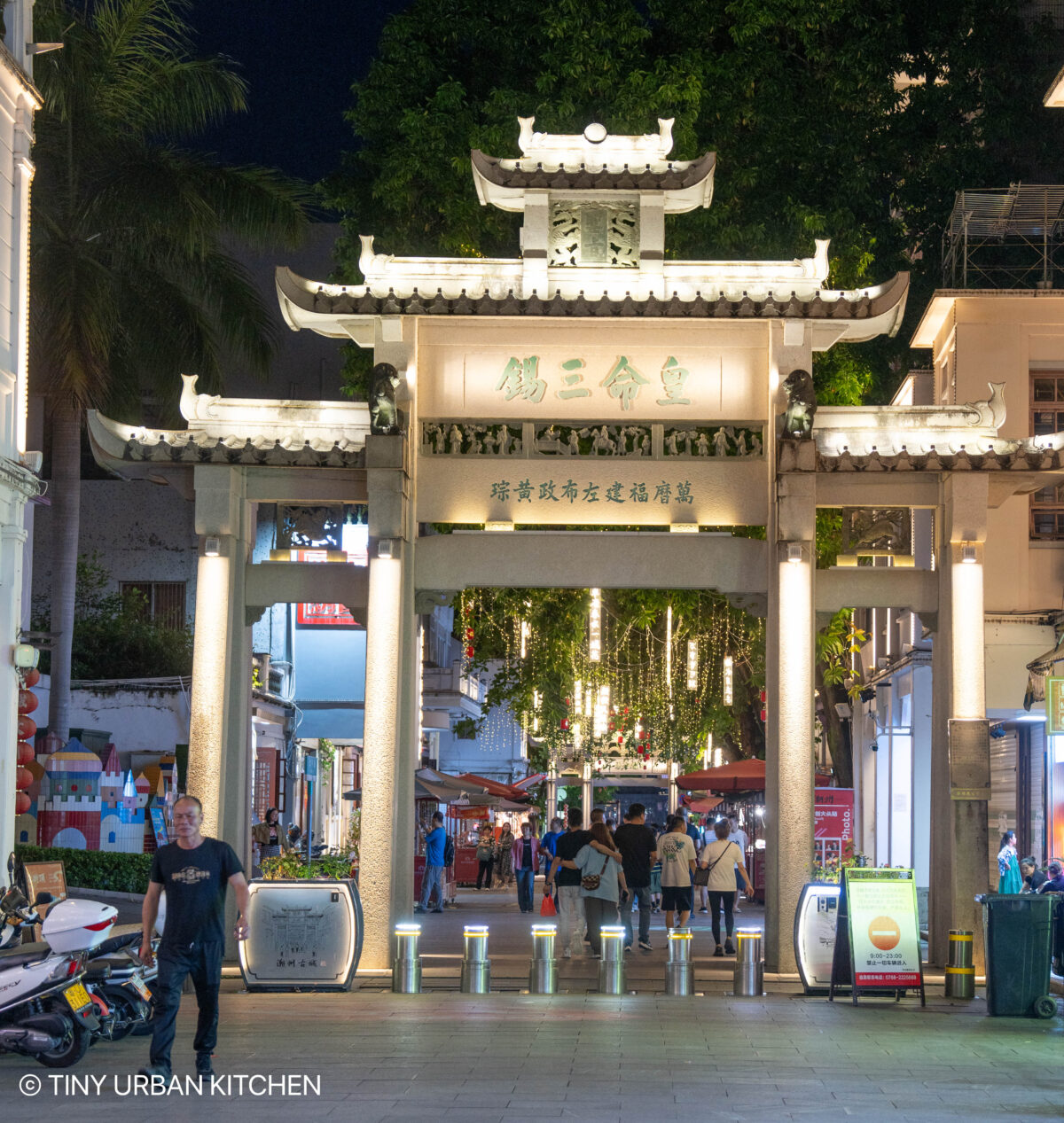
There’s a very popular street for trying all sorts of Chaozhou street snacks.
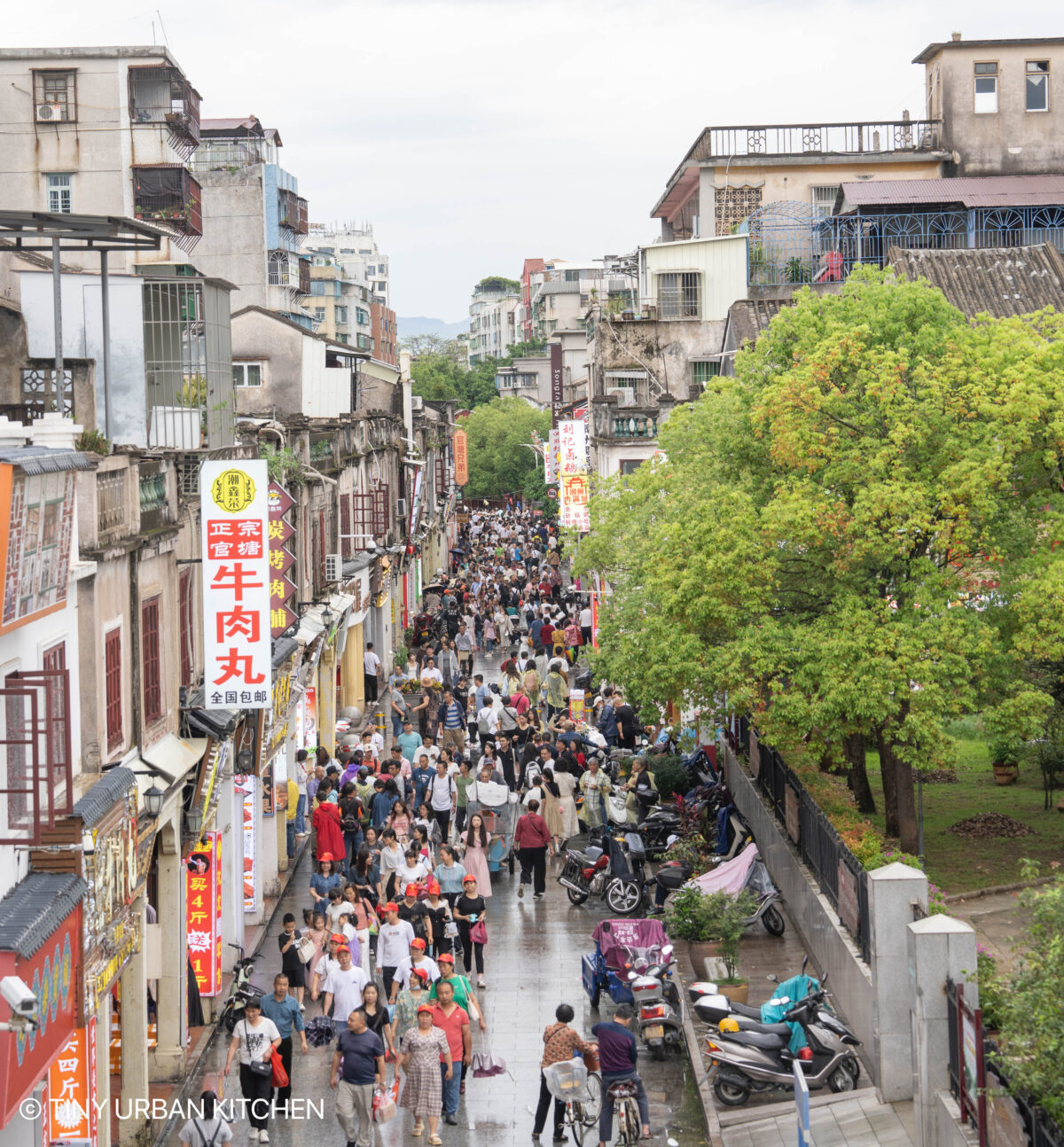
Here are some that we tried:
Yougan Citrus Juice 油干汁
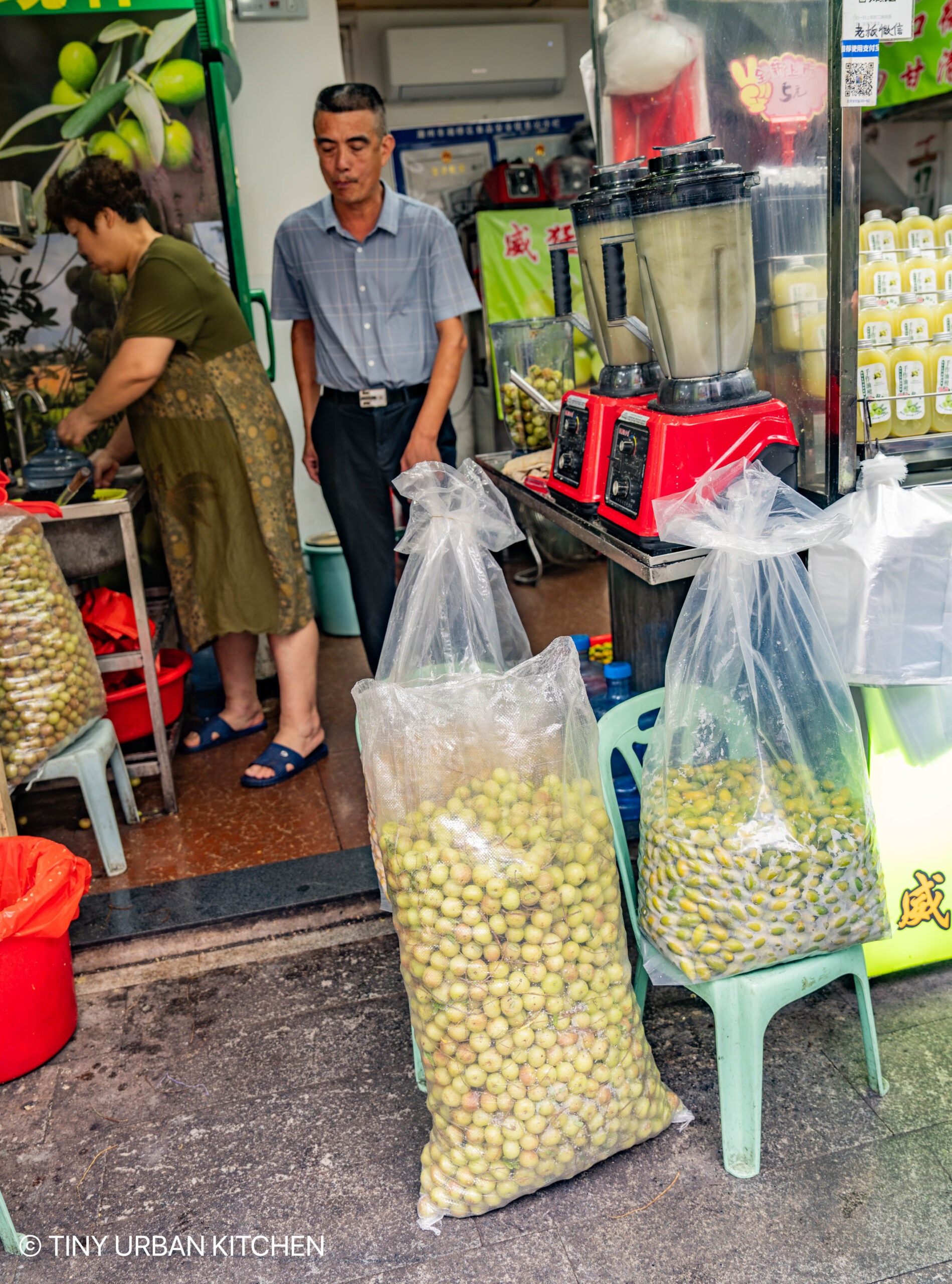
This small, tart citrus fruit (yougan) does not exist in the US, but is common in Southern China, especially in Chaozhou. The locals use it to make a very interesting tart drink that has a bitter, sour, and dry initial taste but transforms into a slightly sweet aftertaste. It grew on me, and after some time, I learned to like it (and even bought more the next day).
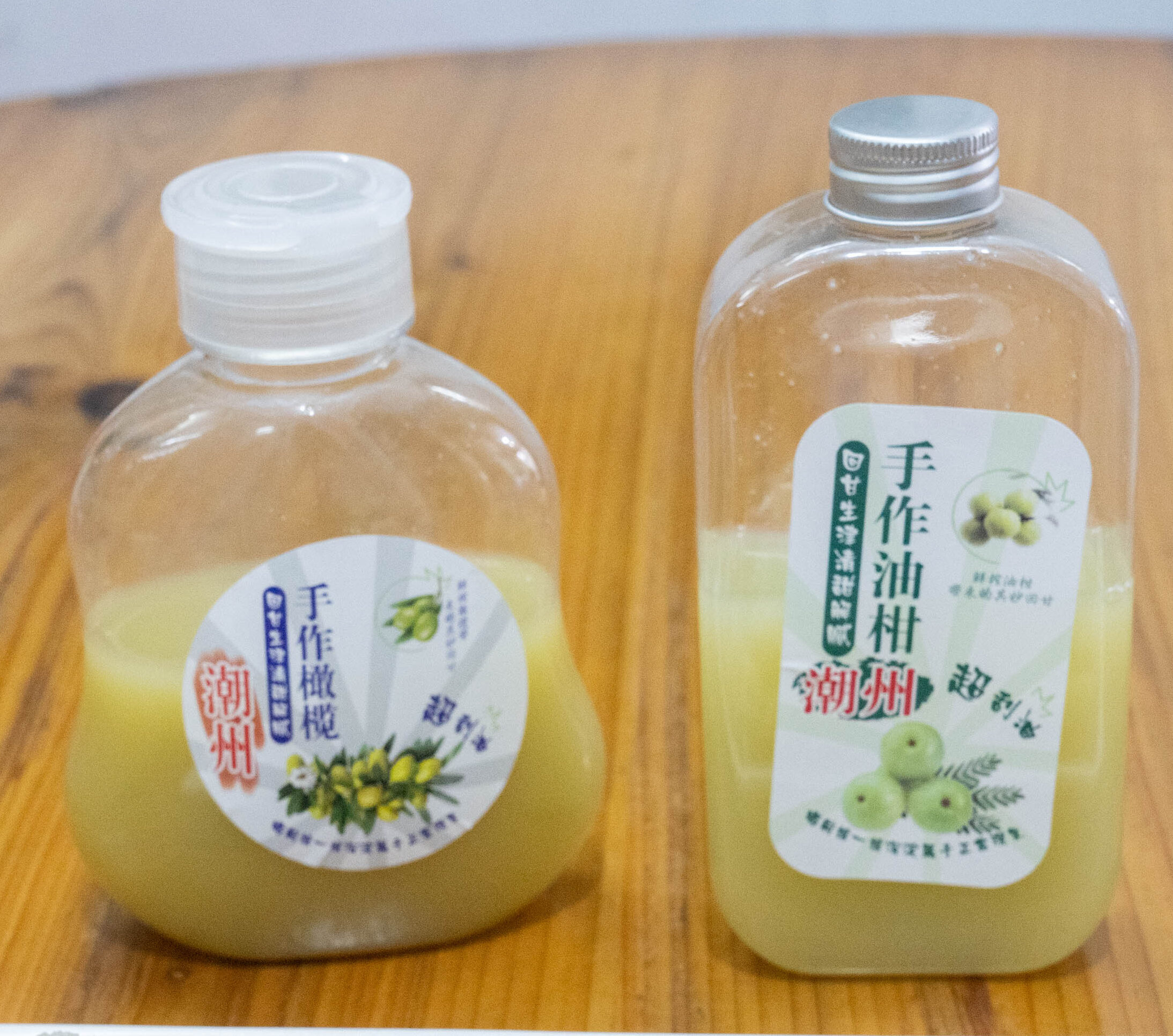
Char Kway Teow 炒粿條
Ahhh! This was one of my favorites bites: rice flour cubes (that reminded me of turnip cakes) stir fried with eggs and scallions.
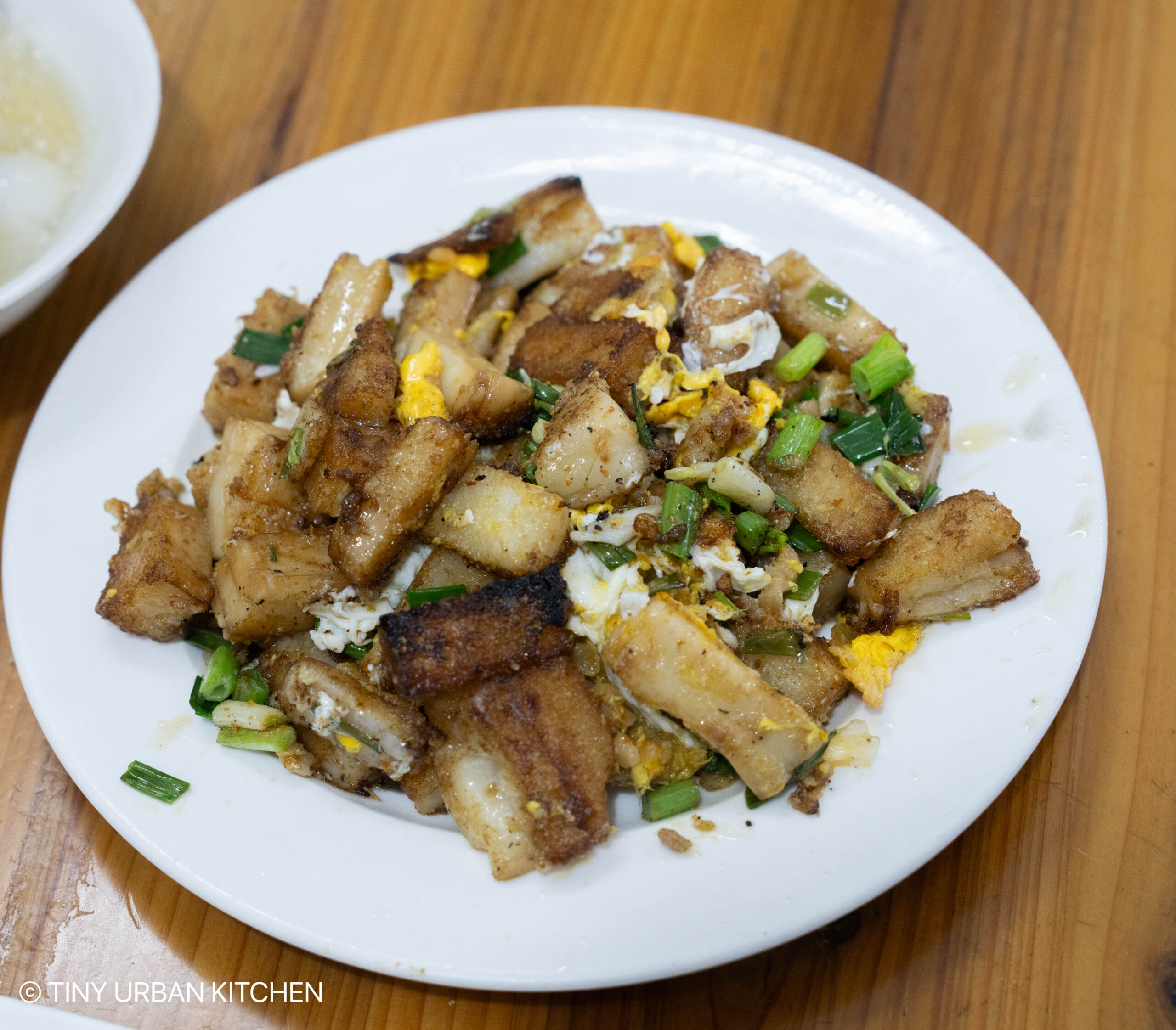
It’s so simple, but the wok hei (fire) together with some simple seasoning made this dish hard to resist. I kept going for the pieces with the most crispy edges (yum!).
Sugar-coated Taro
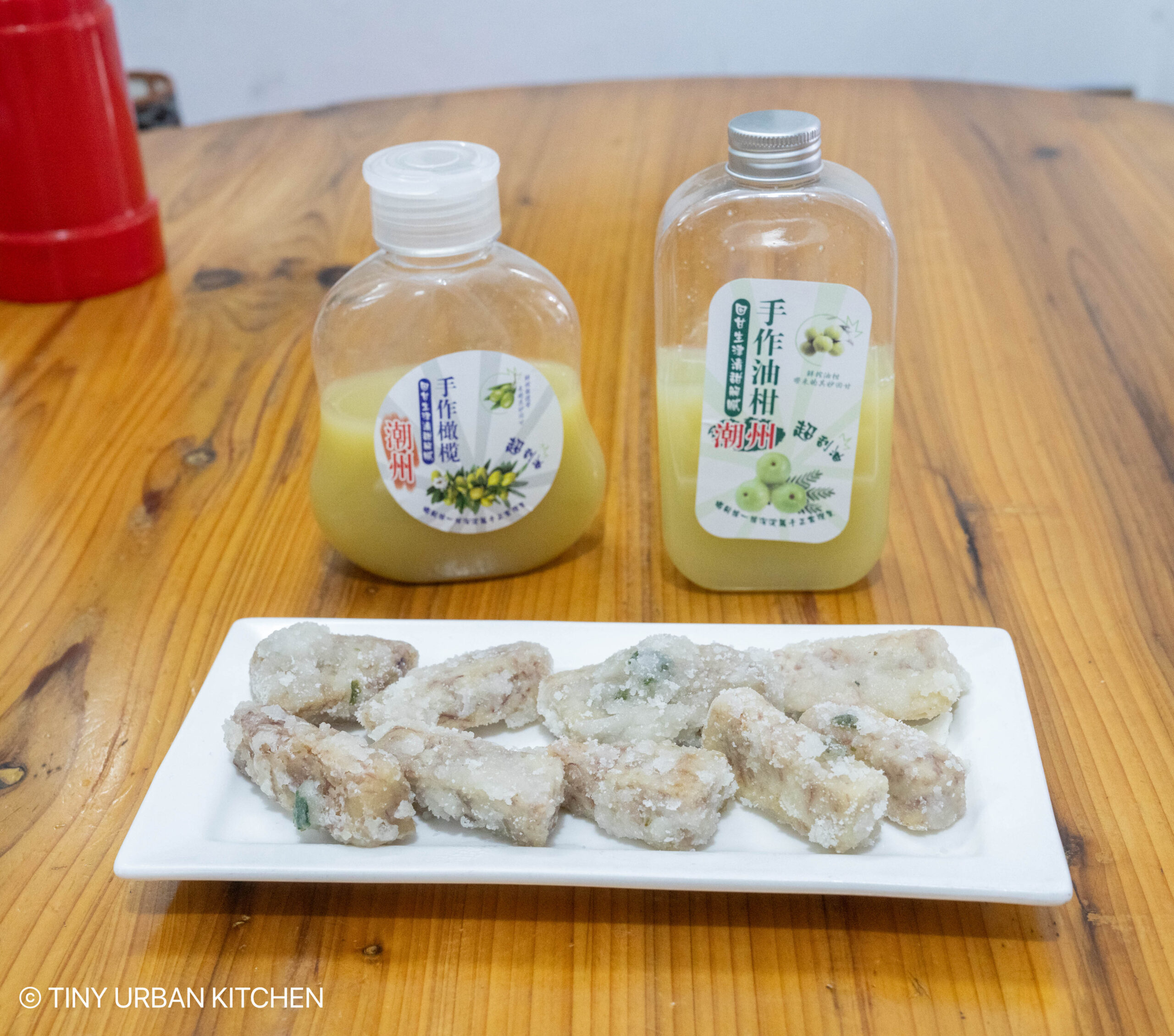
I’ve actually had this dish before in Hong Kong, but it’s harder and harder to find. From the outside it simply looks like long rectangular pieces of big taro root coated (unevenly) in sugar. However, the method of making this dish is very labor-intensive, a process involving a wok, sugar, taro blocks, and lots of time and patience.
Aged Buddha’s Hand Fruit
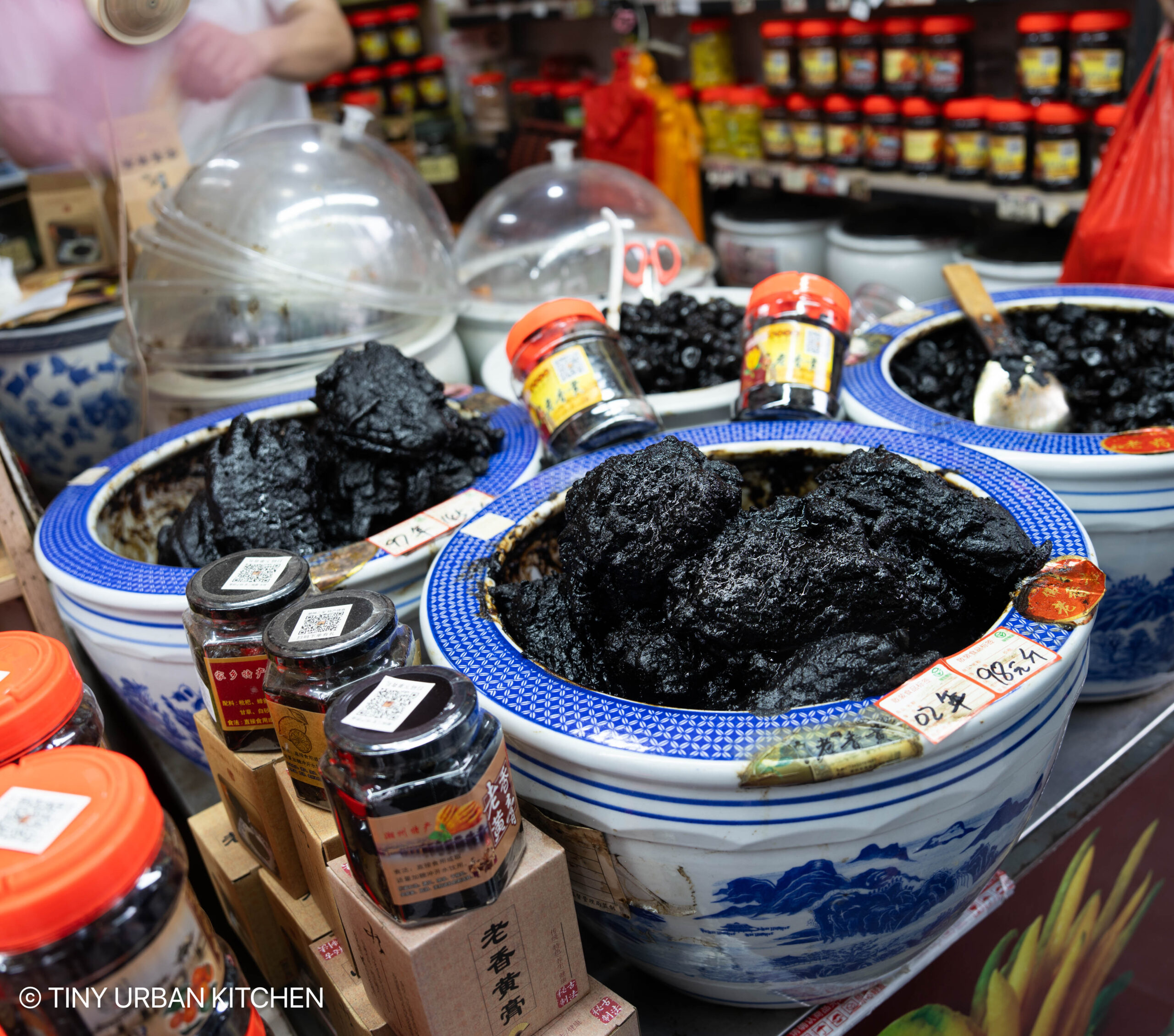
Buddha’s Hand is a citrus that looks a bit like a hand. In Chaozhou they age it for years (the more years, the better). The resultant black, chewy mass is intensely flavorful and can be used in all sorts of applications. Storekeepers are happy to let you try a sample, giving you the opportunity to taste the nuanced differences that come with different years of aging. I was surprised that I enjoyed it, and almost bought some to take back with me.
枫春白粥 - Feng Chun Congee Restaurant
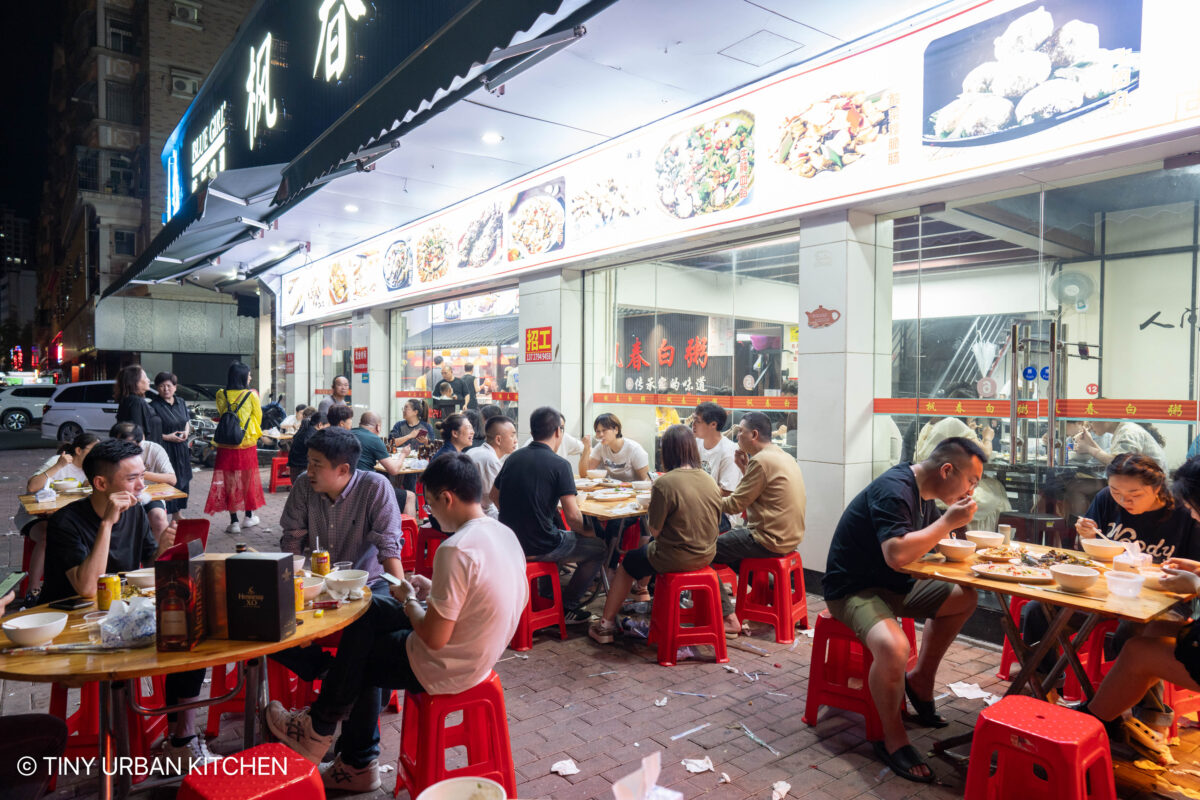
Chaozhou people are night owls and love hanging out at night. There’s a culture of eating 宵夜 (midnight snack) with friends on a regular basis. These types of restaurants don’t open until 10PM, and go on deep into the night.
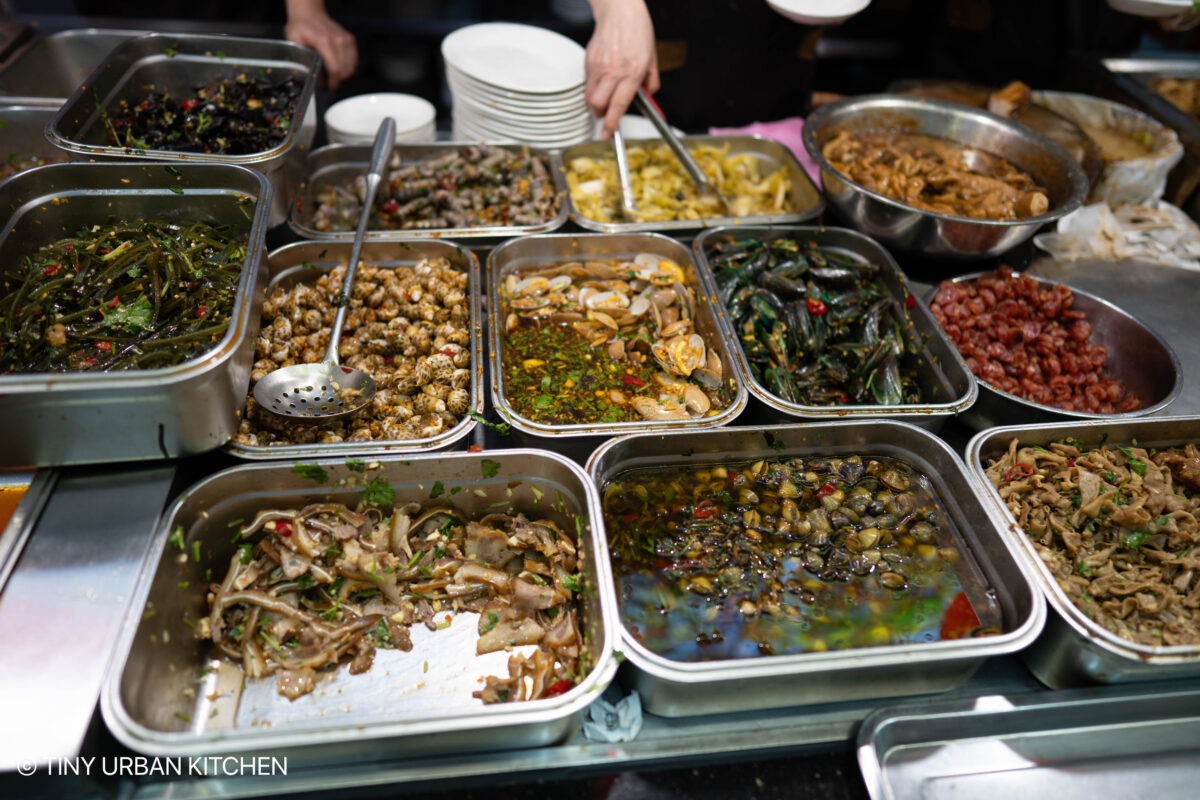
Go inside, pick your dishes (it’s a huge selection), grab a table and sit down on the plastic stools. Chat the night away with your friends while munching on delicious (and cheap!) food such as carp skin, boiled squid, preserved turnip omelet, and chili marinated raw seafood (!).
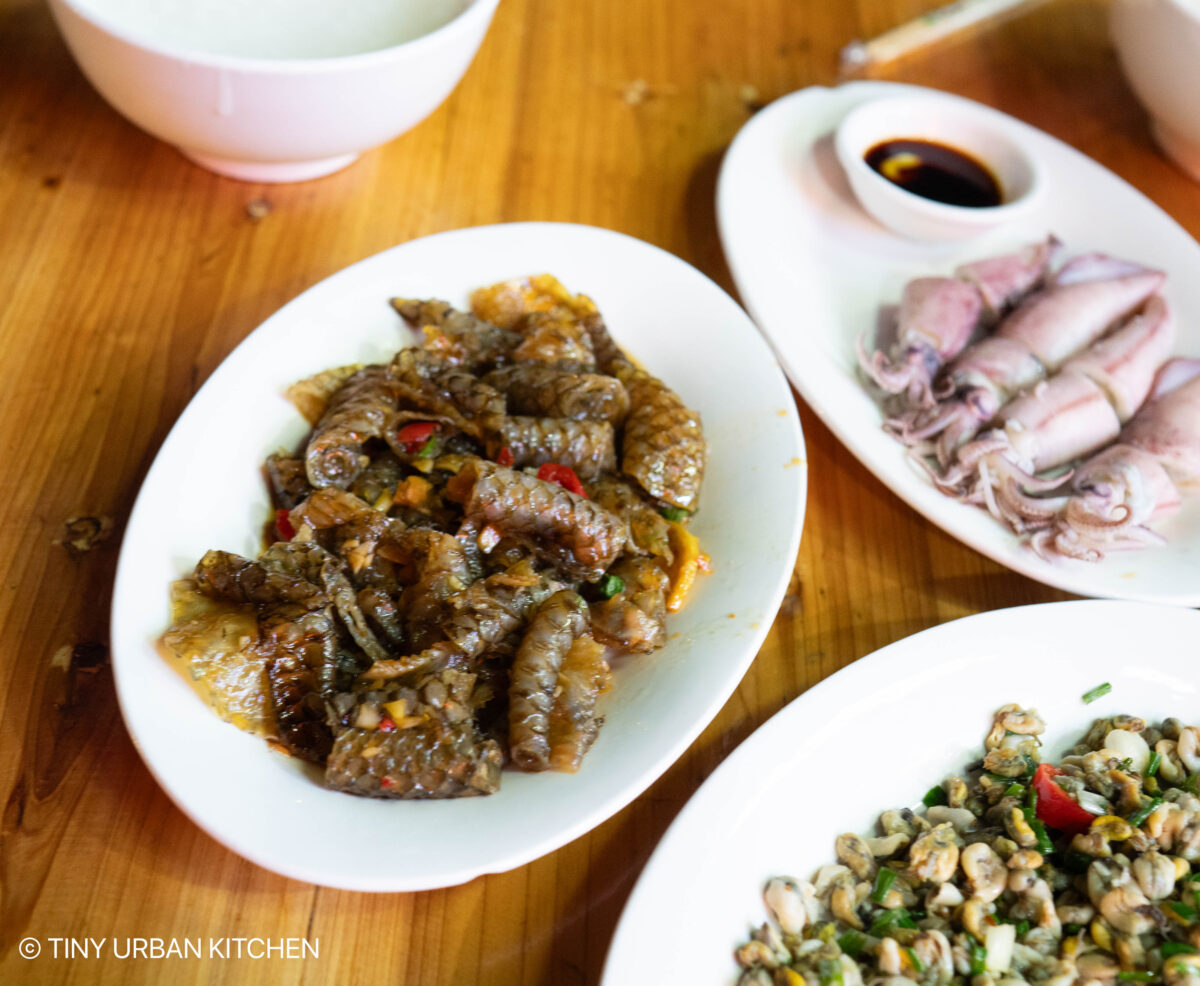
Have you ever had carp skin? It's quite good! We had all sorts of interesting bites.
The place we went to is a super popular spot, and actually doesn't even OPEN until 10PM. It was mobbed around 11PM when we went.
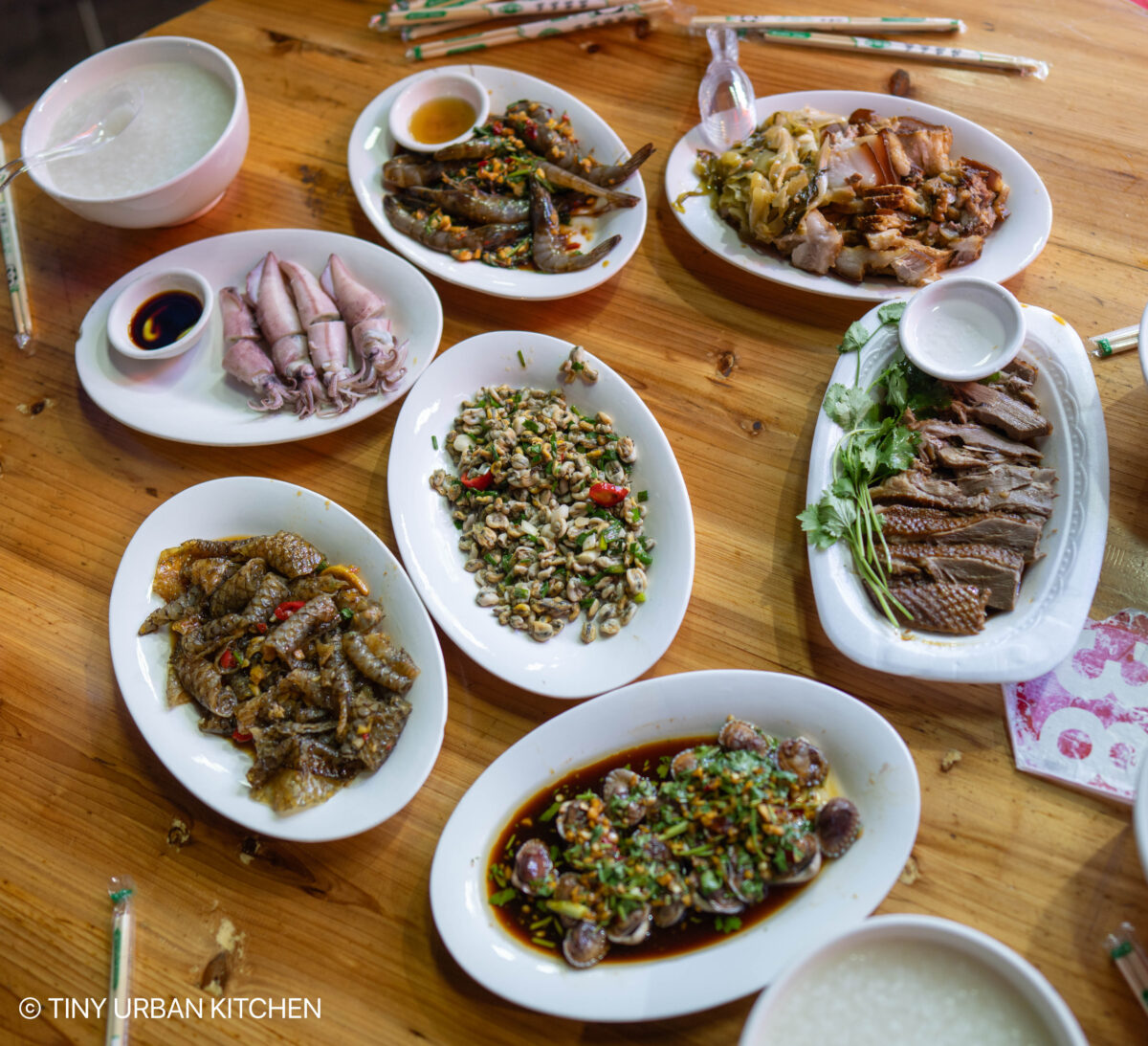
We started our "late night meal" around 10PM, and called it a night close to midnight. Wow, these Chaozhou people have a lot of energy! I was a bit squeamish about eating the raw shrimp and raw clams (even the locals said not to eat too many of them since you might get a stomachache . . . ). I did love the carp skin, baby clams, congee, and more.
Next up: Day 2 in Chaozhou, China!
Related Posts
Pak Loh Chiu Chow Restaurant (HK)
Wong Kee Chiu Chow Restaurant (HK)
Two Days in Kunming China
Guilin and Yangshuo China Report








